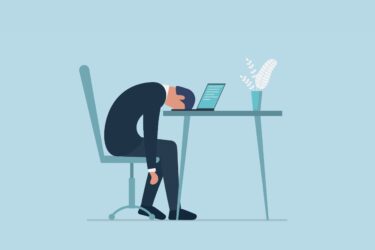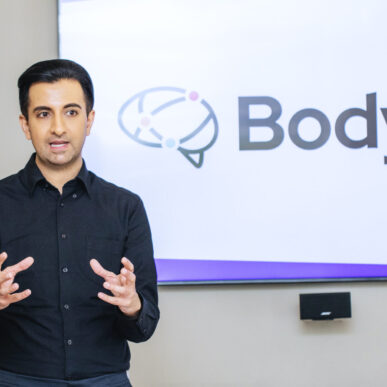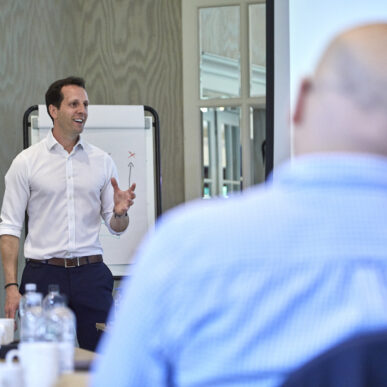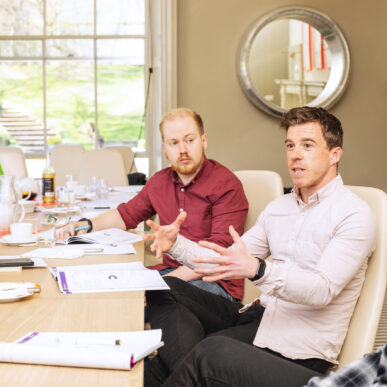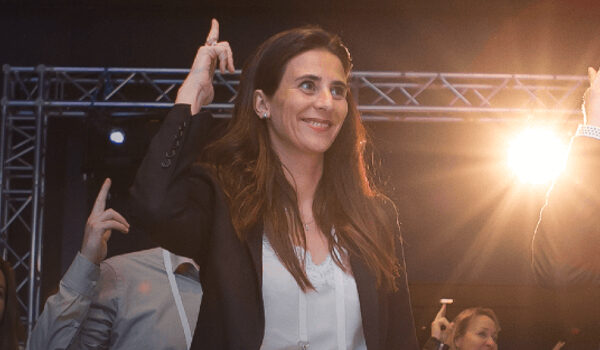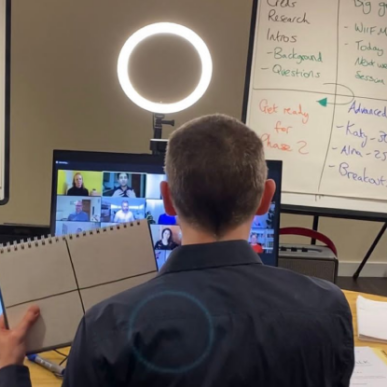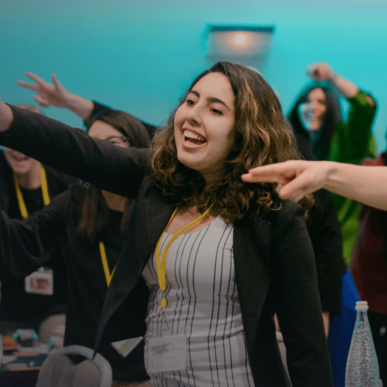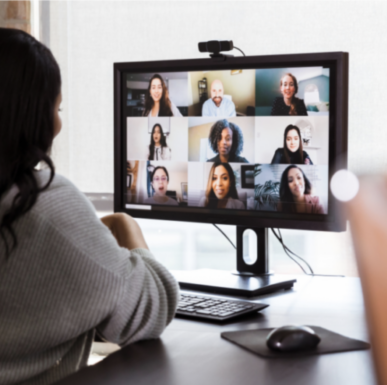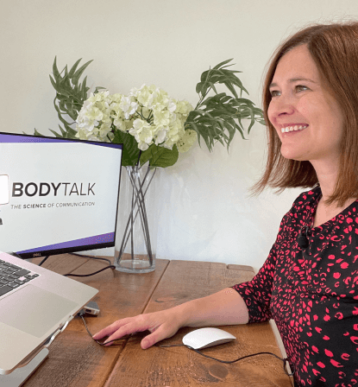“Constant eye-gazing can put us in a hyper-aroused state. It’s intense. No wonder we feel exhausted”.
Stop Zoom Fatigue With These 4 Tips
Zoom fatigue? A few years ago, any mention of ‘zoom’ would trigger memories of the popular 1980’s song by Fat Larry’s Band.
Today the verb has taken on a different meaning. Neither Fat Larry or the Cambridge Dictionary’s description ‘to move very fast’ win the race for our cognitive attention now.
Zoom video conferencing has soared during the pandemic. From around 10 million users in December 2019, the platform has grown to more than 300 million users. That’s a lot of virtual meetings.
Driven by necessity, companies and individuals discovered they could dodge the pandemic travel restrictions and meet online. No need to catch a train or plane or dash across town; click the ‘join’ button from your kitchen table.
It didn’t take long before a new word entered the Cambridge Dictionary, ‘Zoom fatigue’. And boy, did we know what that felt like.
The thing is, we’ve been sitting in front of our PC’s for hours every day for decades, so why are video conferencing platforms different?
STANFORD STUDY
Enter Professor Jeremy Bailenson, founding director of the Stanford Virtual Human Interaction Lab. Professor Bailenson wanted to understand if there was anything behind the widespread reports of zoom-using businesses professionals feeling mentally drained after attending digital meetings.
It turned out there had been dozens of empirical studies in psychology, human-computer interaction, and communication examining behaviour during videoconferencing.
Professor Balienson’s interest, though, was in something more specific and topical: The psychological consequences of spending hours per day, as part of a day-to-day routine, on a virtual platform.
What he discovered was fascinating and revealed insights into how we must adapt our use of this technology to best exploit its potential. Plus, a new understanding of how we might strive to limit the phenomenon of what he called – and we’ve all experienced – “Zoom Fatigue”.
In the journal of Technology, Mind and Behaviour, his peer-reviewed article reported four key factors contributing to ‘Zoom Fatigue’.
EYE GAZE AT CLOSE DISTANCE
It would be weird to maintain eye contact in a face-to-face situation for more than a few seconds. Any longer and you’re demanding a physical response – you’re into ‘kiss or kill’ territory!
Professor Bailenson says ‘behaviour ordinarily reserved for close relationships—such as long stretches of direct eye gaze and faces seen close up—has suddenly become how we interact with casual acquaintances, co-workers, and even strangers.
Consider a Zoom meeting with nine people in a three-by-three grid. No matter who is speaking, each person is looking directly at the eyes of the other eight people for the duration of the meeting’.
This kind of behaviour can put us in a hyper-aroused state. It’s intense. No wonder we feel exhausted after 5 hours of virtual meetings.
COGNITIVE LOAD
When we’re face-to-face, nonverbal communication is natural and mostly subconscious. Body language, eye contact and gestures communicate without too much thought.
On the other hand, video platforms force us to monitor nonverbal behaviour closely. How are you framed? Do you nod in an exaggerated way to show you’re connected? Are you trying to maintain eye contact with the camera? These things add up and put pressure on our cognitive load. Even the way we speak can take effort.
Professor Bailenson notes people speak 15% louder when interacting on video compared to face-to-face. Think of the impact of raising your voice for an entire workday.
AN ALL-DAY MIRROR
‘Imagine in the physical workplace, for the entirety of an 8-hr workday, an assistant followed you around with a handheld mirror, and for every single task you did and every conversation you had, they made sure you could see your face in that mirror. This sounds ridiculous, but in essence, this is what happens on Zoom calls.’ writes Bailenson.
Studies have shown that people are more likely to evaluate themselves when seeing a mirror image over the last six decades. On the plus side, this can lead to more prosocial behaviour, but this constant self-evaluation can be stressful.
Bailenson says these studies have all been short and show participants a mirror image for less than an hour. There’s no data yet on the effects of looking at yourself for many hours per day, but, given past work, it is likely a constant “mirror” on Zoom could lead to self-evaluation and negative affect.
REDUCED MOBILITY
In face-to-face meetings, we move about. We might stand up, stretch, walk to the water cooler, and even if we remain seated, we’re likely to get up and walk somewhere once it’s finished.
Because we’re at our computer, the temptation once a virtual meeting is over is to reply to emails, finish a proposal or sort out our online shopping.
In the meeting, we keep ourselves in the frame of the camera. Often, we sit too close to the camera, meaning any gestures or movements we could usually make become restricted or non-existent.
While Zoom doesn’t prevent one from using gestures during speech, being forced to sit given the camera does limit movement.
Looking to the future as we make a slow return to the office and face-to-face interaction, there’s no doubt video conferencing is here to stay.
So, what’s the answer?
Here are 4 tips to help stop Zoom Fatigue
1 – Stand up. As in the office, many people prefer to stand at their desk, and standing will give you more freedom to move around. Avoid moving if you’re presenting; the audience will get distracted by your pacing!
2 – Keep meetings short and allow for more breaks. Attending or hosting a virtual meeting is more demanding on mental acuity and so psychological stress. A one-hour Zoom conversation can use the same amount of energy as a two hour face-to-face equivalent. Eight hours a day on camera is not healthy!
3 – At Body Talk, we love our delegates to have their cameras to keep the experience interactive and engaging. We also understand it’s not always possible to do so. If you’re feeling the strain, turn your camera off and turn your body away from the screen. You can still listen, but taking away some sensory experience can help reduce the cognitive load. Not a choice if you’re the speaker!
4 – Do you need a video meeting? Just because you can doesn’t always mean you should. Decide as a team to have a video free day at least once a week.
One final tip: Burnishing our zoom skills and managing the cognitive workload will become central to our business success. Remember, when confronted with a changed situation, we are challenged to change ourselves not just to cope but to thrive. Effective Zoom use demands both.
